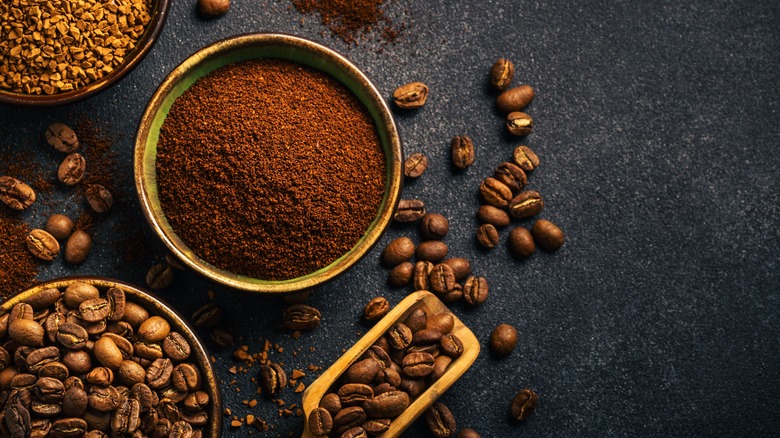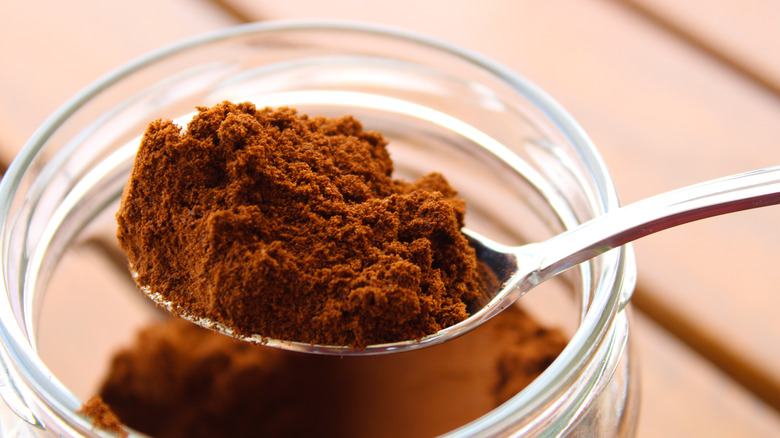Here's How To Grind Coffee Beans If You Don't Have A Grinder
Maybe you accidentally bought whole coffee beans at the grocery store, or you're new to the whole-bean game and didn't get the proper equipment. Maybe your trusty grinder broke just as your morning coffee prep was starting. Whatever the reason, finding yourself in need of a brew without the means to grind your coffee beans feels like a caffeine emergency.
It doesn't have to be, though. Even without a grinder, there are still plenty of ways to brew the perfect cup of coffee if you turn to other tools in your kitchen — like a blender or a food processor. Although they won't offer as consistent or fine of a grind as a coffee grinder, they'll work in a pinch if you're careful with your settings and timing.
Some blenders and food processors will have a grind setting, but the pulse setting will also do. Start by measuring out the coffee beans; because of the size and surface area of food processors and blenders, you might need to grind more beans than usual to ensure they reach the blades. Once you have the right amount, grind or pulse them in bursts of just a few seconds at a time. The blades of blenders and processors are typically larger and further apart than most coffee grinders, so it's easy to get a fine powder on the bottom and large chunks on top — tilt the blender or processor in between bursts to get a more even grind.
Get even more analog with your grinding
The grinding problem is easy if you have a blender or food processor on hand, but if your kitchen equipment isn't well stocked — or the power is out — you're not entirely out of luck. With its long history of crushing spices and medicines, a mortar and pestle was tailormade for everything from a coarse grind to a fine powder, giving you more control over the texture of your coffee grounds than a blender. Depending on the size of the mortar and pestle, you'll likely have to work in batches to make sure the grind is consistent.
Getting even more primitive, all you really need to grind the beans is a heavy object like a rolling pin and some way to contain the beans (like a plastic bag). Even if you're desperate for the caffeine, you don't want to damage your countertops by hitting the beans with the implement. Press down to crush the beans, then roll the pin forward to get a finer grind. You'll have to put some force into the push, but a rolling pin can usually lead to a pretty consistent and even medium-to-fine grind if you watch your work closely.
How will the grind affect the brew?
Depending on the grinding technique you choose, you might have to adjust your brewing method to get the right cup — or vice versa if your coffee-brewing options are limited. You can make coffee even with whole beans, but the grind will affect how and for how long you brew that cup of joe. Cold brew coffee takes an extra coarse grind, and if you have a French press, the coffee grounds should be pretty coarse, too, so any of the makeshift techniques will work just fine.
Drip coffee pots and pour over require more of a medium grind, so you'll need a little more control over the texture of your beans. As long as you tilt the blender or food processor or you're watching the mortar and pestle or the rolling pin, these methods should all be able to achieve a medium grind. For a moka pot that needs a medium-fine grind or espresso that needs a super-fine grind, you'll be best served by the mortar and pestle that can get coffee beans down to a powder.


